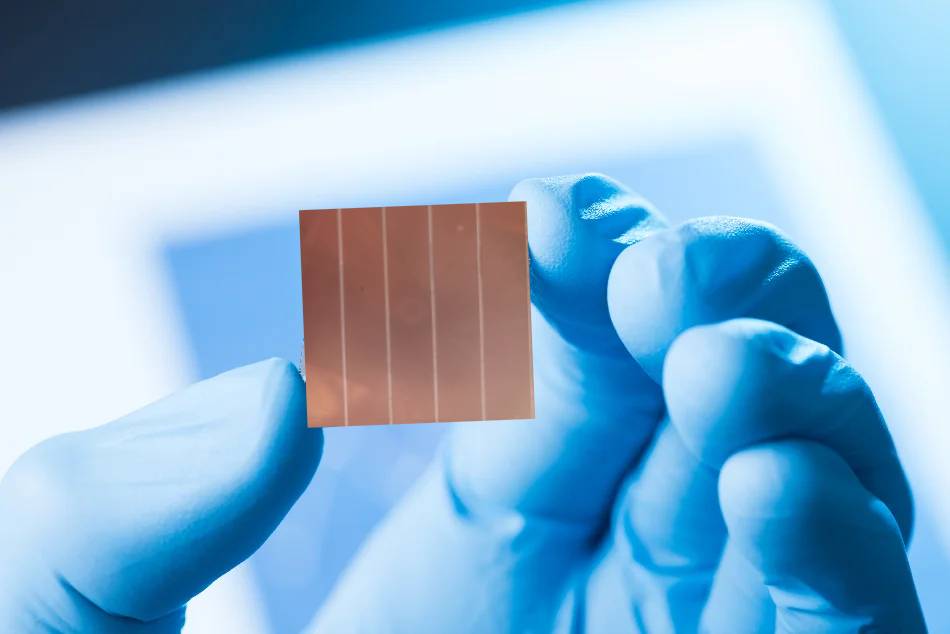From pv magazine Global.
An international research group has developed a perovskite solar cell with strong thermal stability and enhanced electron injection by using special nanotubes made of cesium-titanium dioxide (Cs-TiO2).
The scientists used titanium sheets with 99.4% purity, 1 mm thickness, and a length of 50 mm. The cell was fabricated with a two-step electrochemical anodization process and was then encapsulated with Cs nanoparticles, after being doped with a Cs-based solution. The C2-TiO2 nanotubes were then annealed at 450 C. The solar cell is based on methylammonium lead triiodide (CH3NH3PbI3), which is a perovskite with high photoluminescence quantum yield.
The researchers fabricated the nanotubes with a regular, ordered structure, which they say is necessary to achieve high levels of power conversion efficiency in the solar cell. This efficiency is proportional to the length of the nanotubes themselves.
“If the nanotube length is in between 1 micrometer (μm) to 20 μm then the incident photon-to-current conversion efficiency (IPCE) increases and reaches up to 80% at 20 μm length resulting in an increase in the efficiency of perovskite solar cells,” they said, adding that 20 μm is a reasonable distance for an electron to travel and to achieve higher efficiency.
The academics said that the metal ions of the dopant material they used to produce the nanotubes have a better ability to accept electrons.
“The doped metal can easily trap the conduction electrons enabling the reduction in electron-hole pair recombination,” they said.
They used ultraviolet-visible spectroscopy (UV-Vis) to compare the performance of their solar cell with a similar cell designed with TiO2 nanotubes without Cs doping. The thermal performance of the two devices was measured through thermal gravimetric analysis (TGA). The thermal assessment showed that the doped nanotubes have excellent thermal stability under temperatures ranging up to 800 C. They also found that they lose roughly 1% of their weight at around 150 C.
The analysis showed that cesium atom doping effectively facilitates electron transport by reducing recombination reactions. The researchers said that the Cs-TiO2 based perovskite solar cell exhibited superior performance, resulting in an 18.67% jump in short-circuit current and a 22.28% increase in power conversion efficiency from the reference cell. “The doping process can be performed at a low cost, as we used an optimized concentration of cesium of only 0.05 M,” research principal author, H.M. Asif Javed, told pv magazine.
“The improvement in solar cell parameters can be attributed to enhanced extraction of the photo-generated charge carriers in the device,” the researchers concluded.
They described the cell in “Encapsulation of TiO2 nanotubes with Cs nanoparticles to enhance electron injection and thermal stability of perovskite solar cells,” which was recently published in Surfaces and Interfaces. The research team included scientists from Pakistan’s University of Agriculture Faisalabad and the National University of Sciences and Technology, China’s Xi’an Jiao Tong University and Jiangsu University, and King Saud University in Saudi Arabia.
This content is protected by copyright and may not be reused. If you want to cooperate with us and would like to reuse some of our content, please contact: editors@pv-magazine.com.









By submitting this form you agree to pv magazine using your data for the purposes of publishing your comment.
Your personal data will only be disclosed or otherwise transmitted to third parties for the purposes of spam filtering or if this is necessary for technical maintenance of the website. Any other transfer to third parties will not take place unless this is justified on the basis of applicable data protection regulations or if pv magazine is legally obliged to do so.
You may revoke this consent at any time with effect for the future, in which case your personal data will be deleted immediately. Otherwise, your data will be deleted if pv magazine has processed your request or the purpose of data storage is fulfilled.
Further information on data privacy can be found in our Data Protection Policy.